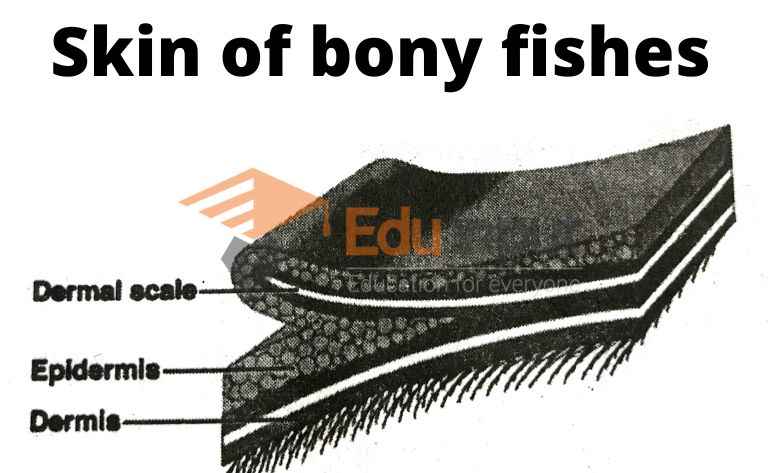The Skin of Fishes-Structure and Functions
Fish skin is composed of collagen fibers, elastin, and keratin. These three proteins give the skin its strength and elasticity. The skin of a fish must perform many functions. It helps maintain osmotic balance, provides physical protection to the body, is the site of coloration, contains sensory receptors, and plays a role in respiration in some fish.
Mucus glands help maintain water balance and provide bacterial protection and are abundant in the skin of fish, especially round mouth and bony fish.
The Skin of Jawless Fishes
Jawless fishes have thick skin. It is composed of epidermal glandular cells:
1. Some of these glandular cells secrete a protective cuticle.
2. Multicellular slime glands are present in hagfishes. These glands produce large amounts of mucous slime. This slime covers the body surface. The slime protects the animals from external parasites. Thus hagfishes are also named slime eels.
The Skin of Cartilaginous Fishes
The skin of cartilaginous fishes is multilayered. It contains mucous and sensory cells.
Denticles (Placoid scales)
The dermis of cartilaginous fishes contains small placoid scales. These scales are called denticles or placoid scales. Denticles contain blood vessels and nerves. Their structure is similar to vertebrate teeth. Cartilaginous fishes grow throughout life. Thus their skin area also increases. New denticles are also produced. It maintains these protective structures at the skin surface.
The denticles do not grow after maturity. Thus, new denticles are formed and lost continuously. Denticles project above the surface of the skin. So they give cartilaginous fishes a sandpaper texture.

The Skin Of Bony Fishes
The skin of bony fishes contains scales. These scales are composed of dermal bones. The scale has a thin layer of dermal tissue. It is covered by a superficial epidermis. Scales are not shed. So they grow at the margins and over the lower surface. Growth lines are present on the scales in many bony fishes, growth lines are useful in determining the age of a fish.

Functions of Skin in Fishes
1. Respiration: The skin of bony fishes is permeable. It functions in gas exchange. The smaller fishes have a large skin surface area. The dermis is richly supplied with capillaries. These capillaries help in respiration.
2. Mucous glands: The epidermis contains many mucous glands. Mucus prevents bacterial and fungal infections. It reduces friction as the fish swims.
3. Granular glands: Some species have granular glands. It secretes an irritating poisonous alkaloid.
4. Photophores: Many teleosts live in deep aquatic habitats. They have photophores. Photophores help in species recognition. It acts like lures (attractant). It gives warning signals.



Leave a Reply